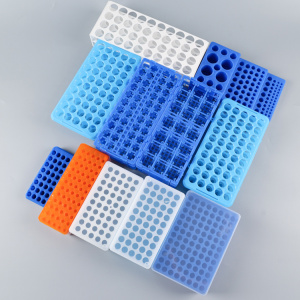Selection and use of cell culture plates
As an important tool commonly used in cell culture, cell culture plates have various shapes, specifications and uses.Are you also confused about choosing the right culture plate?Don't know how to use the culture plate conveniently and correctly?Are you also confused about how to use the training board?Next, it's time to familiarize yourself with the learning app.

Classification of cell culture plates
1) Tissue culture plates can be divided into flat bottom and round bottom (U-shaped and V-shaped) according to the shape of the bottom;
2) The number of culture wells is 6, 12, 24, 48, 96, 384, 1536 wells, etc.;
3) Depending on the material, there are Terasaki plates and ordinary cell culture plates. The choice depends on the type of cells being cultured, the desired culture volume, and the purpose of the various experiments.

The difference and selection of flat bottom and round bottom (U-shaped and V-shaped) culture plates
- Flat bottom culture plates are generally used for adherent cells;
- Type V is generally used for suspension cell culture;
- U-shaped culture plates are also mostly used for culturing suspension cells;
- Type V plates are sometimes used in immunological hemagglutination experiments.
- Different shapes of culture plates serve different purposes. Cultured cells usually have a flat bottom, which is convenient for microscope observation, the bottom area is clear, and the height of the cell culture medium is relatively constant, which is also suitable for MTT detection. Therefore, whether it is adherent cells or suspension cells, experiments such as MTT generally use flat bottom plates. Absorbance must be measured using flat-bottomed culture plates.
- U-shaped or V-shaped plates are generally used for some special requirements. For example, in immunology, when two different lymphocytes are mixed in culture, they must come into contact with each other in order to stimulate them. Currently, U-shaped plates are commonly used because cells are aggregated in a small area by gravity.
-Round bottom culture plates are also used for isotope incorporation experiments that require harvesting cells with a cell harvester, eg. B. "Mixed Lymphocyte Culture", etc. V-plates are commonly used in cell killing and immunohemagglutination experiments. Cell killing experiments can also be replaced by U-shaped plates (low-speed centrifugation after adding cells).
- Most of the cell cultures use flat-bottom culture plates, which are convenient for microscope observation, the bottom area is clear, and the cell culture liquid level is relatively constant, which is also suitable for MTT detection.
The difference between cell culture plate and microtiter plate
ELISA plates are generally more expensive than cell culture plates. Cell plates are mainly used for cell culture, and can also be used to determine protein concentration; ELISA plates include coated plates and reaction plates, and are generally not used for cell culture. They are mainly used in immunoenzyme-linked reactions. The final protein detection requires higher requirements and specific enzyme-labeled working solutions.
The area of the well bottom of various commonly used culture plates and the recommended amount of liquid to be added
The liquid level of the culture medium added to different orifice plates should not be too deep, generally in the range of 2-3 mm, and the appropriate amount of liquid to be added to each culture well can be calculated based on the area of the bottom of the orifice plate.
Different spring. If the amount of liquid added is too much, it will affect the gas exchange (oxygen exchange), and it is easy to overflow and cause pollution during transportation. The specific cell density added can be flexibly controlled according to the purpose of the experiment. Yongyue medical cell culture plate is made of medical polystyrene (PS), produced in a 100,000-class purification workshop, sterilized by irradiation, does not contain DNase, RNase, no pyrogen, safe and environmentally friendly. Yongle culture plate has a variety of specifications to meet the needs of different bacterial cultures.
Yongyue Medical, a one-stop manufacturer of laboratory consumables and reagents, is worthy of your trust and choice!Welcome to consult and order! 400-000-9961



